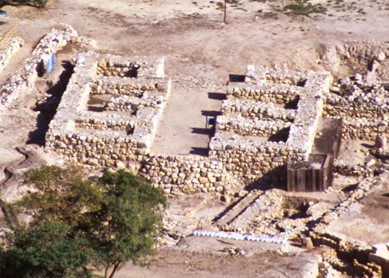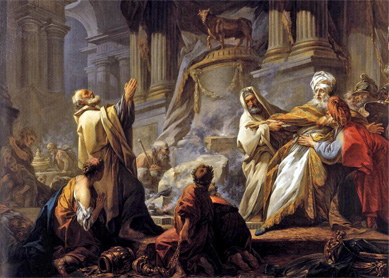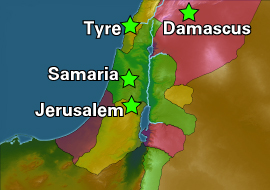The Hebrew Bible describes David and Solomon successfully founding the nation of Israel, establishing rule by a single king in Jerusalem, making the Jerusalem temple the central place of Yahwistic worship, and expanding national borders beyond the traditional tribal territories. (
Archaeological excavations have uncovered elaborate building projects, indicating strong centralized governance, at sites from this period including Jerusalem, Gezer, Megiddo, and Hazor. However, hopes for enduring rule from Jerusalem were soon dashed, as one kingdom fractured into two—Judah in the south and Israel in the north—after Solomon’s death. An attack by the Egyptian pharaoh Sheshonq (biblical Shishak;
The Deuteronomistic authors of 1-2 Samuel and 1-2 Kings (Judeans writing several centuries after these events) attribute the failure of unity to Solomon’s construction of temples for his foreign wives (
To consider the divided monarchy, then, we must recognize that during the united monarchy, Israel and Judah were less united than the Hebrew Bible suggests. In fact, some scholars claim that Israel and Judah were never politically unified in one kingdom; the Hebrew Bible’s depiction of the united kingdom must be read accordingly, as an elegy to a long-lost national unity. It is clear in both the biblical text and material culture that a variety of factors undermined the solidarity between Israel and Judah.
According to the Bible, A half-century of warfare followed the split into two kingdoms along the traditional Saulide-Davidic borders. The century after that was punctuated by fractious interactions, culminating in war between the north and south late in Israel’s history (
Still, profound ties bound the two nations together. Their story—united and divided—is told in the language and ideology of Judah, meaning that as the Deuteronomistic authors conceptualized and transmitted the history of the northern nation of Israel, they excoriated most of Israel’s kings and virtually all expressions of Israel’s religious practice and belief. Yet in doing so, these authors affirmed ties that bound the two nations together. The Deuteronomists could have dismissed Israel as they dismissed Judah’s many non-Yahwistic neighbors. Their decision not to do so can be attributed to their acknowledgment of Israel’s fundamental Yahwism, powerful prophets, revered ancestral traditions, valued clan affiliations, and more. What remains singularly important is that, despite the reality of separateness, the bond between these two “divided” nations became a critically important component of the Hebrew Bible. The depictions of this bond are so convincing that even today their imagery colors our reconstructions of the biblical past.




